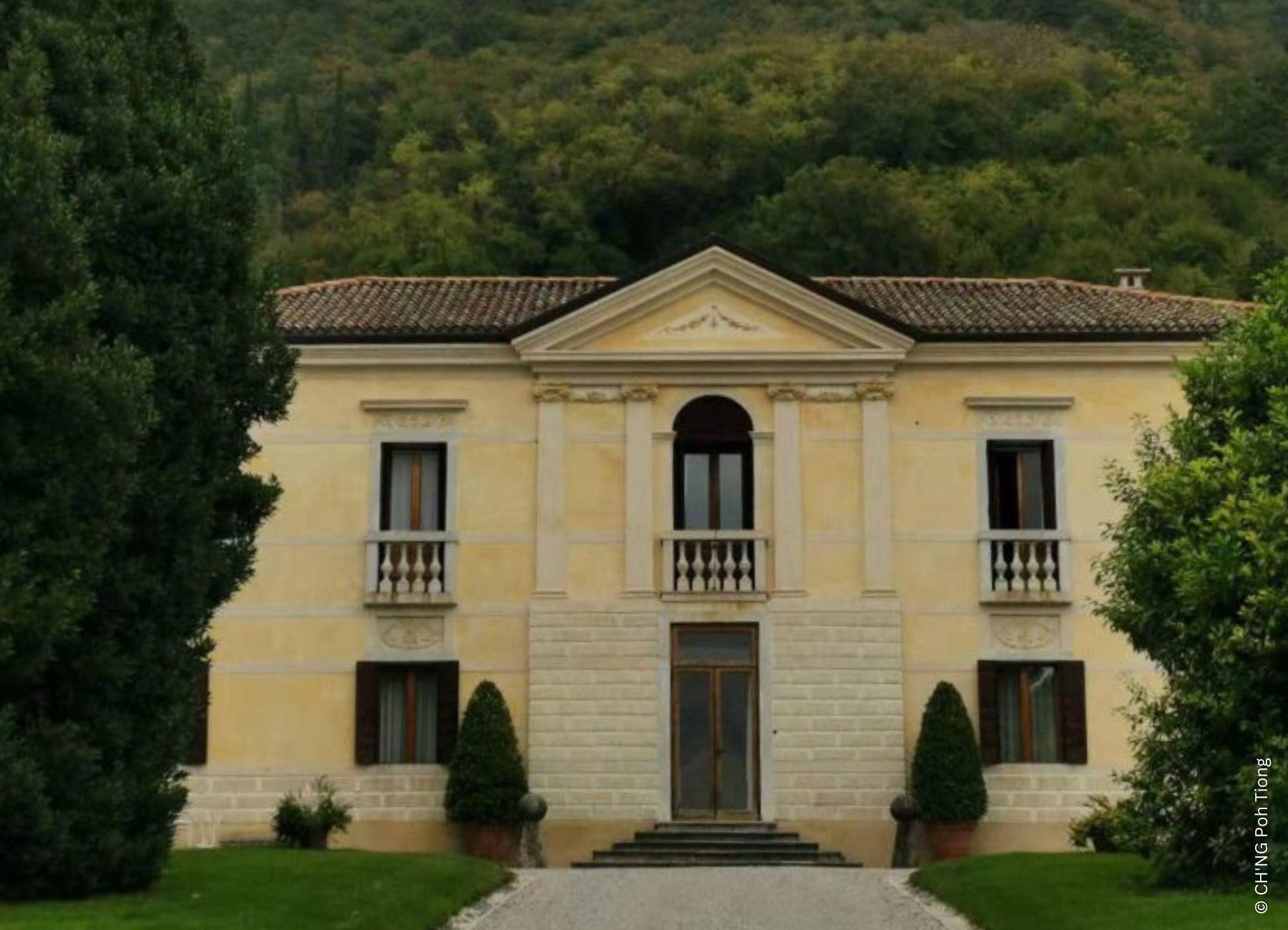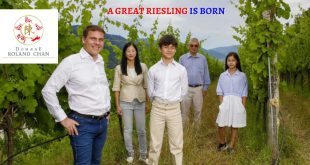The House of Nino Franco or Cantina Nino Franco is regarded by aficionados of Italian wine as perhaps the finest, most dedicated producer of Prosecco.
The fact the vineyards, cellars, winery, offices and a guesthouse named Villa Barberina are up in the hills of Valdobbiadene in north-east Italy further attests to their being a premier producer of Prosecco.
Founded slightly over a hundred years ago in 1919, Nino Franco the brand, is named after the son of founder Antonio Franco. It is, however, the third generation that is the engine that has propelled the wines and the brand to the elevated position we know today.

Primo Franco (above) – at first with his father Nino, and then solo – modernised the winery to produce wines of great energy, freshness, and delicious harmony.
Armed with a diploma from the Conegliano Veneto School of Oenology – and complemented by travels, observation and reflection – Primo Franco was convinced that in order to produce a great wine, you need to control production not just from a technical point of view but also the raw material – namely grapes – in this case Glera, the variety responsible for Prosecco.
Primo Franco assumed responsibility for the family winery in 1982. Then, at the start of the 1990s, he took over a vineyard and experimented with different methods of planting even as he cultivated old clones. At the same time, Primo worked closely with local growers to produce ever better fruit so that what emerges from a bottle of Nino Franco Prosecco is not just pristine Glera but a variety that speaks of a sense of place – the terroir – of Valdobbiadene and the Prosecco hills.
The bubbles in Prosecco are produced by the Charmat Method, aka Italian Method, where the secondary fermentation takes place in stainless steel tanks rather than inside the bottle as is the case with champagne. That said, quality is not homogeneous. The very best producers though, certainly Nino Franco, their wines possess ageing potential.
In fact, the Prosecco of Nino Franco knock on the door of champagne. Not only are the bubbles small and persistent, the purity of Glera fruit – layers of that fruit – and balancing freshness speak of winemaking of the highest order.
More than just a highly competent winemaker, Primo Franco is also a rebel.
The visionary Italian turned Prosecco on its head when, in 2009, he withdrew his single-vineyard Grave di Stecca from DOCG status because the regulatory tasting commission felt it did not taste like typical Prosecco. Far from hurting its reputation, that defiance raise Grave di Stecca to a very sought-after notoriety.
Sometimes you have to rock the boat to show what you have is really a cruiseliner!
Cantina Nino Franco is a family concern. As is so often the case with such emotional endeavours, extra love, dedication, and devotion are lavished on the vineyard, wines, winery and the brand.
Primo’s charming wife Annalisa looks after their guest-house Villa Barberina (their own home is not far away). The 18th Century Venetian villa is a spacious four hectares which include vineyard, park, swimming pool, rooms and access to nearby wineries including, of course, Nino Franco.
Their daughter Silvia Franco represents the fourth-generation. She studied interior design in Milan and had practiced in several architecture and design studios before joining the family business in 2006.
For his vision and boldness in shaking up Prosecco, Primo Franco has been likened to what Pierro Antinori and Angelo Gaia have done for Tuscany and Piedmont respectively.
 Primo’s charming wife Annalisa looks after their guest-house Villa Barberina while her husband travels the world and throughout Italy to spread the fame of Nino Franco Prosecco. Pictured here in their home, their cat is on the roof
Primo’s charming wife Annalisa looks after their guest-house Villa Barberina while her husband travels the world and throughout Italy to spread the fame of Nino Franco Prosecco. Pictured here in their home, their cat is on the roof
 Daughter Silvia Franco in the walled, single-vineyard Grave di Stecca. The fourth-generation of the family studied interior design in Milan and had practiced in several architecture and design studios before joining the family business in 2006
Daughter Silvia Franco in the walled, single-vineyard Grave di Stecca. The fourth-generation of the family studied interior design in Milan and had practiced in several architecture and design studios before joining the family business in 2006
 Villa Barberina is an 18th Century Venetian villa that is a guest-house open to the public. The spacious four hectares include the walled Grave di Stecca vineyard, a park, swimming pool, rooms, and access to nearby wineries including, of course, Nino Franco
Villa Barberina is an 18th Century Venetian villa that is a guest-house open to the public. The spacious four hectares include the walled Grave di Stecca vineyard, a park, swimming pool, rooms, and access to nearby wineries including, of course, Nino Franco


TASTING NOTES
Nino Franco Rustico Brut ![]()
This is the flagship of the house. Rustico has about 10 g/l of residual sugar which makes it a Brut (as in Champagne so long as the dosage is not over 12 g/l). The bubbles are created by the Charmat Method or “Cuve Close”, aka Italian Method, in a stainless steel tank. At 4.85 atmospheres, the tenacity of the bubbles is closer to cremant than champagne which pressure is usually 6 atmospheres. Bright straw with a hint of green. Small, persistent upwardly mobile bubbles. Rustico shows hallmark appley and Nashi pear fruitiness chased by relentless freshness. Gently creamy on the palate. Crisp, dry finish. The fruit and acidity are very harmonious. Medium body.

Valdobbiadene Prosecco Superior Dry ![]()
The bubbles are even finer and more persistent in Prosecco Superior than Rustico. Apples, ripe grapefruit, a hint of pineapples, and young Spring honey. The very fine fruit is persistent, layered, and effortlessly balanced with the insatiable freshness. The texture is even creamier than Rustico. Medium-plus bodied. Elegant and seamless from entry to lingering, long finish. A delicious aperitif and irresistible with sushi, sashimi, dim sum, tempura, cold cuts including ham, prosciutto, and Iberico.

Graves di Stecca 2015 ![]()
Grave di Stecca Brut is a single vineyard that is a clos or walled property which surrounds Villa Barberina in the Valdobiaddene Hills. The south-facing vineyard was planted in 1993 (a still wine is also produced). The stony soil gives the vineyard its name “Grave” which is not unlike Graves in Bordeaux. Produced 100% from Glera, the dosage is only 7 g/l. The governing authorities of Prosecco found Grave di Stecca so unlike normal Prosecco they had problems awarding it DOCG status. Primo Franco did a one-upmanship on them in 2009 and liberated Grave di Stecca from DOCG consideration. And simply described it as spumante or sparkling. Grave di Stecca is in a class of its own. And very sought-after, highly prized and higher priced than other Prosecco. Produced also in the charmat method – with ageing on lees – the 5.5 atmospheres of pressure is very close to champagne which is 6 atmospheres. Bright pale straw. White flowers, appley, Nashi pear, pomelo citrus and gently creamy (will become creamier with evolution and age). Intensity and persistence of fruit, freshness, and long, marathon finish. The “Clos du Mesnil” of Prosecco.




